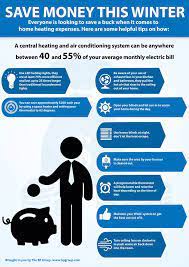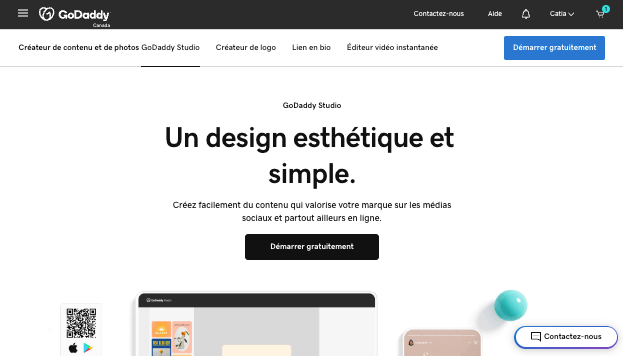If you’ve been an entrepreneur for any length of time, you’ve likely tried various promotion strategies for your business. In this post, we’ll look closely at an often-overlooked way to capture attention: public relations marketing.
You may naturally associate promotion or marketing with long-standing advertising strategies such as:
- Television and radio marketing
- Print ads
- Search engine optimisation (SEO)
- Google ads
- Pay-per-click posts on Facebook and Instagram
Although these approaches may generate sales, they shouldn’t constitute the backbone of your business marketing efforts. While it may take longer, Public Relations marketing might actually get you the same results for free.
Related: Your one-stop promotions toolkit
What exactly is public relations marketing?
PR marketing is a holistic media strategy that creates and maintains your company’s brand image in the public sphere.
It’s about creating goodwill, rather than promoting a product or service with the goal of making a sale.
Using a properly executed PR marketing strategy, including media relations, you can reach the people most likely to become customers in a less “salesy” way.
If your small business were a person, PR marketing would be its social life. Think of PR as a way of connecting and building trust, perhaps eventually lead to a sale (or at the very least, increased name recognition).

The prevalence of user-centered social media channels such as Tiktok and Instagram has made it easier (and much more critical) for companies to nurture their brand images on a personal level.
Related: How to identify your target audience
How can a small business benefit from PR marketing?
Especially as consumers are encouraged to “shop local,” small businesses that prove themselves to be do-gooders for the community can gain a leg up on their big-box competitors.
Whether it’s sponsoring a local golf tournament or putting on a community event with a charitable goal, consumers will want to support you when they see you supporting others.
Other unique (and mostly free) exposure opportunities include:
- Interview spots on radio and television shows
- Magazine features
- Press releases that are reprinted in the local papers
- Collaborating with influencers who share your values
These smaller-scale opportunities may not reach as many people as an advertisement in The Globe and Mail, but their impact on your public image can be more personal and meaningful.
How to create and maintain a small business PR marketing strategy
PR marketing is often (though not always) free advertising you receive by:
- Capturing the attention of the media
- Providing high-quality content (e.g., blog posts, infographics, tutorials)

Here are the steps to getting started:
1. Identify and develop a brand image
What exactly do you want your business to be known for? What are your values as a business owner?
These are questions to carefully consider before launching a PR marketing campaign.
You may want to be seen has helpful, charitable, liberal, pioneering — or even edgy.
Make sure the values you present to the public are true to your brand. It won’t do for a business that uses Styrofoam peanuts in its shipping boxes to claim to be concerned about the environment.
Once you have a clear picture of your desired reputation, it’s vitally important to make sure that your brand image is consistent with it across all platforms:
- Social media pages and posts
- Your website
- Advertising you pay for
- Direct marketing materials like emails
For those who like step-by-step instructions, read this post — it provides an overview of what goes into crafting a brand strategy.
Editor’s note: Make your venture look legit with a logo you create yourself with this free logo design tool.
2. Let others tell your story
It’s been said that the goal of public relations marketing is to let others tell your story.

For small business owners, this can be achieved at the local level by approaching:
- Community newspapers and magazines
- Local cable TV channels
- Influencers with audiences that match yours
Local television or magazine opportunities typically come at no cost, as they create interesting and relevant content (and seasonal content is in particularly high demand).
The key is to provide value to viewers or readers.
For example, a caterer may do a Valentine’s Day cooking segment on local TV, while an HVAC company could create a winter furnace maintenance checklist for a free regional magazine.
The businesses aren’t directly promoting their products in these examples; they’re providing value to people without coming off as “salesy.”
By creating trust and building a positive reputation, you may be the viewer’s first call when they need the product or service you offer in the future.
Now that’s strategic thinking!
Related: DIY market research — the small business guide
3. Use your connections
Influencer marketing is the newest category in the business promotion space. These are people like Allana Davison and Bret Mossing who have built large followings on social media.
Influencers can help build awareness of your product or service by mentioning it to their followers.
Influencer relationships may be started organically in some cases — for example, when they mention your product after:
- Buying it themselves and enjoying it
- Receiving it as a free sample from you
But long-term collaborations are typically paid.
Before sending your product to a TikToker, make sure that they live up to your brand values. If possible, stay away from influencers who:
- Tend to be controversial
- Have strong religious or political convictions that may alienate potential customers
You certainly don’t want your brand “canceled” by association over something you can’t control.
4. Connect, thank and help
An engaged and well-connected business stays top-of-mind in the digital marketing world.
In concrete terms, this involves expanding your social media reach to all relevant platforms and actively engaging with your followers.
If someone leaves a positive comment on your Instagram post, respond by thanking them.
Post uplifting stories about the community initiatives your company is sponsoring or show your clients in action using your product or benefitting from your service. Offer tips and solutions to problems related to your field of expertise.
The PR professionals at Entrepreneur magazine suggest a few low-cost PR marketing options for small businesses hit hard by inflation:
- “Distribute electronic newsletters at regular intervals, detailing company happenings.
- Participate in online communities by joining discussion forums.
- Pose questions, set up challenges, or make up some games.”
Although time-consuming, these are all great ways to boost activity on your social media. This will make it more likely that your posts will land on a prospective customer’s FYP (For You Page).
Pro tip: Those who use GoDaddy's Digital Marketing Suite have a built-in Marketing Planner app. It makes it easy to pre-plan customized posts with everything from links to hashtags.
Is PR marketing worth the effort?
The traditional marketing campaign or advertising plan is designed to yield short-term results. It aims to promote a particular product or service to prompt an uptick in sales. Whatever boost in brand recognition that results is a secondary effect, but not much beyond that.
Traditional marketing communications work to promote the occasional sale or product launch.
But in a world where media is ever-changing, the average small business owner will not find a holistic and durable solution in a “regular” advertising plan. Not to mention the costs, which are severely limiting for entrepreneurs with smaller budgets.
In fact, according to the Harvard Business Review, 60 to 90% of strategic plans never come to fruition. These “failures to launch” in marketing inevitably lead to wasted time and money.
This is where public relations marketing comes into play. Once believed to be only for big players, the social media explosion of the last decade has made PR marketing a must-have for any business.
A smart and consistent public relations marketing plan can:
- Create long-lasting community relations
- Solidify your brand image
- Even protect your company in times of crisis
Best of all, it can be done for a fraction of the cost of a television or radio campaign. By putting in the energy and time, business owners at every level can benefit from the most valuable business currency out there: trust and connection with existing and potential clients.
The subtle art of Public Relations marketing
Now that you have a general understanding of PR marketing and how to go about it, you may be able to identify areas where your marketing plan is lacking. Start small and fill one gap. It may take years of consistency to fully establish your brand identity, but luckily PR marketing is a durable strategy that delivers results long after the initial effort.







